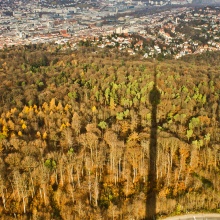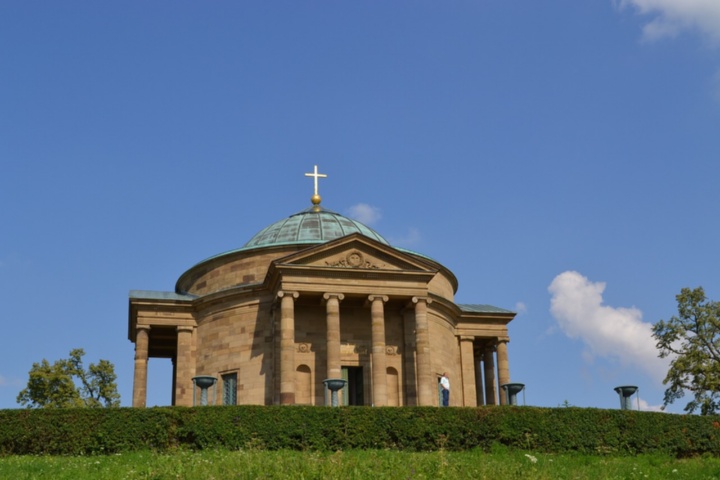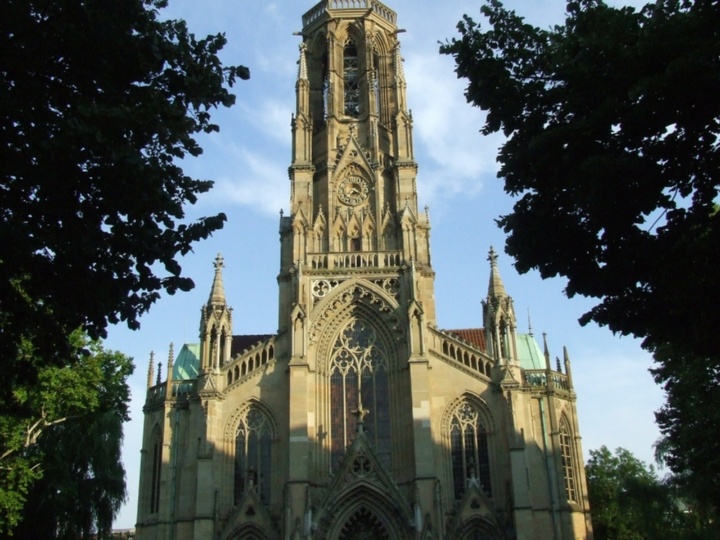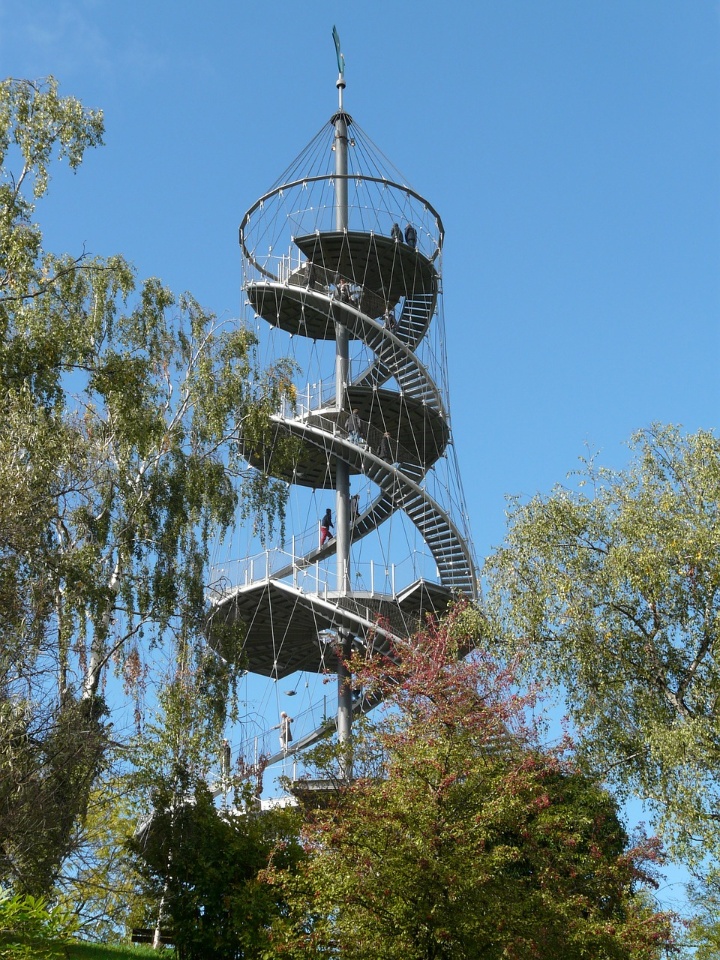1. Weißenburgpark on Bopser Hill
The Weißenburgpark is located on Bopser, a hill in south Stuttgart that also gives the surrounding city quarter its name. The park has an area of approximately 5 hectares and is a great place to walk, go for a leisurely stroll, or just simply relax. Popular destinations in Weißenburgpark include the Teehaus café and the marble hall located below it. The stunning views over the city make it well worth a visit.
2. Grabkapelle on Württemberg hill
3. The Karlshöhe
The Karlshöhe is located between the city’s west and south quarters. Surrounded by vineyards and gardens, it is well worth taking a walk up to the top of the hill. Once there, you are rewarded with fantastic views over the city. A further attraction is the Municipal Lapidarium Stuttgart, which can be found at the foot of the Karlshöhe. This municipal open-air museum is home to a wealth of stone relics such as archways, statues and parts of historical ruins.
4. Monte Scherbelino (Birkenkopf)
The Birkenkopf, located between Stuttgart West and Botnang, is known locally as Monte Scherbelino. The name came about because huge amounts of debris were dumped here after the Second World War, causing the hill to grow 40 meters in height between 1953 and 1957. Once you arrive at the top you can enjoy expansive views over modern Stuttgart, while simultaneously examining debris from the past, such as the facades of houses that were destroyed during the war.
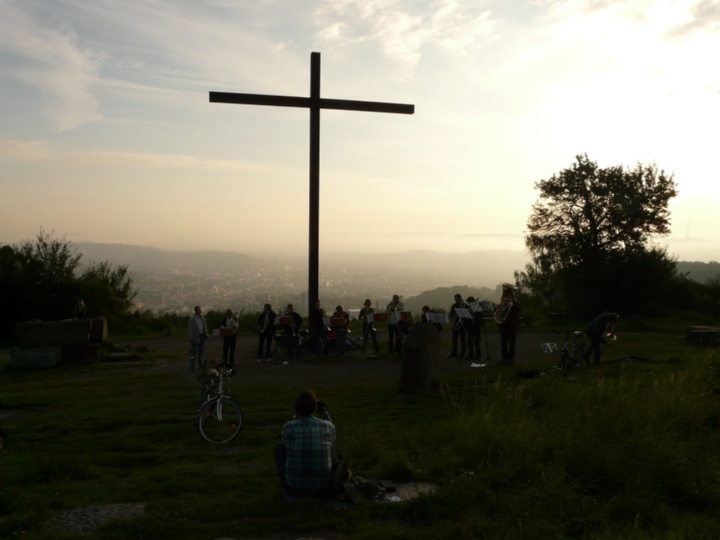
5. Feuersee
The Feuersee lake in Stuttgart West is known to most people because of the church located there. The Neo-Gothic Johanneskirche is positioned on a small peninsula jutting out into the lake. The church was rebuilt without its steeple after it was destroyed during the Second World War.
The lake promenade has recently been redesigned and was reopened in June 2016. Local residents, tourists, businessmen, families and many more gather here on warm summer days.
6. Schloss Solitude
Schloss Solitude is located between Stuttgart West and Gerlingen. A visit to the palace can be combined with a walk through the woods in Stuttgart West. When you reach the top, the palace gardens offer the perfect place to relax. The exterior of the palace was built in the Rococo style, while the interior shows some elements of the early Classical era.
7. Max-Eyth-See
Apart from the river Neckar, the Max-Eyth-See is probably the second most popular place to spend some free time on or near the water. The lake is located between Mühlhausen and Hofen and was once a gravel pit. Stuttgart’s largest lake, it was created as part of the canalization of the Neckar in 1935. When the weather is good, visitors can hire a paddle boat, go for a stroll, cycle round the lake, or barbeque. Bathing in the lake is not permitted.
8. Höhenpark Killesberg and Killsbergturm
The park is located in Stuttgart North and visitors flock to see the stunning flowers, water lily pond and of course the Killesberg tower. A further highlight of this extensive public park is 25 art objects from local artists. Anyone who fancies a long walk can start at the Schlosspark and then walk through Rosensteinpark to the Leibfriedschen Garden and then on to Wartberg and all the way to Killesberg.
Janey
Kommentare
- Socjologia
- 2021-02-10 00:51:32
I have been meaning to write something like this on my site and you have given me an idea. Cheers.
- Sokrates Refleksje
- 2021-02-18 19:09:55
Virtually the exact same image is shown from a fairly wide variety of different angles and distances, indicating the vastness of the plains and the power that these characters hold (or will soon hold) over them.
- Japonia Opis
- 2021-02-26 02:33:58
Hello there, awesome web site. All of the issues you created on were quite fascinating. I attempted to provide in the RSS feed to my news reader. Thanks
- Gatunki Szkła
- 2021-03-08 15:18:56
I love when you talk about this type of stuff in your posts. Perhaps could you continue to do this?
Comment on this article
Your email address will not be published.


